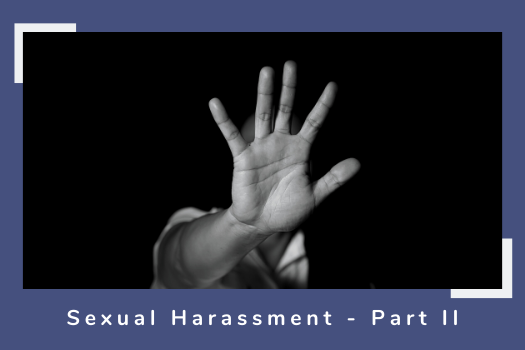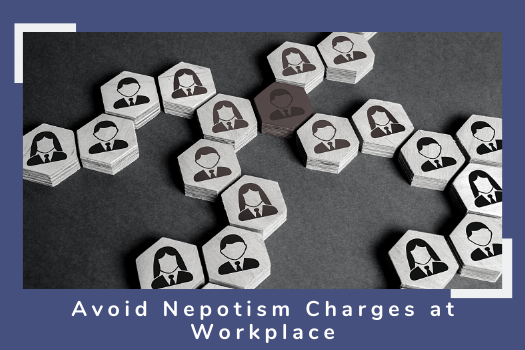Sexual Harassment at Workplace - A Case Study - Part 2
Employee Engagement, Employee Relations, Rewards and Recognition
Meera belongs to a middle-class family. Her father died when she was 16 years old. She has two younger siblings. She needs to work to support her family. Her mother is working as a clerk in a government organization but her salary is not enough to take care of the family. She is a sincere and hard-working girl. Her problem with Vikram Anand begun from the day she joined our organization. Vikram know about her background and he tried to take advantage of her situation. He would often call her to his cabin and scan through her body. In an attempt to help her, he would often try to touch her. He would put his arm around her shoulders or around her waist. She asked him to behave appropriately but he paid no attention to it. He would ask her to come out with him for dinner and movies but she refused all the time. He told her that if she will corporate with him, he will increase her salary and will recommend her for ad hoc bonus or else he will make her life terrible. He would send pornographic videos and text sex jokes on her mobile. In fact, on her last birthday, she was on leave but Vikram sent two pairs of lingerie to her. Having failed in his attempts to persuade her, now, for last couple of months, he has begun to humiliate her publically, trashing her work, etc. and have told her that he will continue to do so till the time she agree to come out with him for a private weekend holiday.
Now, that is sexual harassment by all means and definitions.Sexual harassment is a form of sex discrimination when it would not have occurred but for the person's gender. Sexual harassment includes any one or more of the following unwelcome acts or behaviour: Physical contact or advances, comments about women's bodies, pressure for dates, unwelcome touching and hugging, lewd and threatening letters, public humiliation, inappropriate invitations, stalking, leaning over, invading a person's space, sabotaging women's work, hostile put-downs of women, graphic descriptions of pornography, A demand or request for sexual favours, Making sexually coloured remarks and any other unwelcome physical, verbal or non-verbal conduct of sexual nature.
If the following circumstances exist in relation to any behaviour, that is, if any act is done under the following circumstances that would also count as sexual harassment:
- Implied or explicit promise of preferential treatment in employment
- Implied or explicit threat of detrimental treatment in employment
- Implied or explicit threat about her present or future employment status
- Interferes with work or creates an intimidating/hostile/offensive work environment
- Humiliating treatment likely to affect her health and safety.
Unwelcome and unwanted are TWO parameters for defining sexual harassment. It is the impact and effect the behaviour has on the recipient that will define the behaviour as sexual harassment.
I asked Neha to get take this matter on Sexual Harassment Committee and initiate enquiry process. I also asked her to bring in at least THREE members from outside of company of social repute. Of which, at least TWO must be females and one of the female must be lawyer. Before initiating the enquiry process, I spoke to the CEO and apprised him of current situation. He was reluctant to take any action against Vikram but I managed to get him on-board for the interest, reputation and growth of the company.
When the committee begun the enquiry process, Vikram denied all charges but later on accepted everything as all proofs were against him. While the enquiry process was in progress, two more female employees came forward to speak against Vikram. We spoke to Meera and asked her about her expectations from proceedings. We managed to complete the entire process in 60 days of time. We kept Vikram suspended for the entire duration of enquiry process. In the meantime, Vikram’s family get to know about entire incident and his wife left the house with their daughter and went to her parent’s place. At the end of the enquiry, the committee decided to terminate the employment of Vikram Anand.
Victim of sexual harassment should not let go of experiences which are demeaning their self-esteem. They must -
- Say "No" clearly- Express in direct language (verbal or written) that behaviour must stop.
- Document the harassment- Keep a written log, keep track of dates, times, and behaviour.
- Get emotional support- Friends/family can be good outlets.
- Document your work- Keep copies of performance evaluations and memos that attest to the quality of your work.
- Explore company channels- Talk to your manager or speak to someone in HR Department
- File a complaint- If the problem can't be solved through company policy, you may choose to pursue a legal remedy.
As an employer know the following:
- First and foremost, acknowledge that it is your legal responsibility to provide safe working environment for women free from sexual harassment and discrimination and that you can be held liable for sexual harassment by employees.
- Know that sexual harassment can have a devastating effect upon the health, confidence, morale and performance of those affected by it. The anxiety and stress produced by sexual harassment commonly leads to those subjected to it taking time off work due to sickness, being less efficient at work, or leaving their job to seek work elsewhere.
- Understand the reasons why women remain silent about sexual harassment. An absence of complaints about sexual harassment does not necessarily mean an absence of sexual harassment. It may mean that the recipients of sexual harassment think that there is no point in complaining because nothing will be done about it; it will be trivialised; the complainant will be subjected to ridicule, or they fear reprisals.
- Recognise the tangible and intangible expenses and losses organisations experience - Costly investigation and litigation, Negative exposure and publicity, Embarrassing depositions, Increased absenteeism, Lowered employee morale, Reduced productivity, Decreased efficiency, Higher employee turnover, Erosion of organisation’s brand names, goodwill, and public image.
Sexual harassment is all about expression of male power over women that sustain patriarchal relations. It is used to remind women of their vulnerability and subjugated status. In a society where violence against women, both subtle and direct, is borne out of the patriarchal values operating in society, force women’s conformity to gendered roles. These patriarchal values and attitudes of both men and women pose the greatest challenge in resolution and prevention of sexual harassment. Studies find that sexual harassment is still endemic, often hidden, and present in all kinds of organisations. Yet it is still not always viewed as a problem, which has to be systematically tackled. The issue is of concern for both women and the employers as studies show that sexual harassment touches lives of nearly 40-60% of working women. Thus, combating sexual harassment involves developing understanding of what is sexual harassment and change of attitudes in all- be it employees, colleagues, friends, administrators, employers or the law makers.






